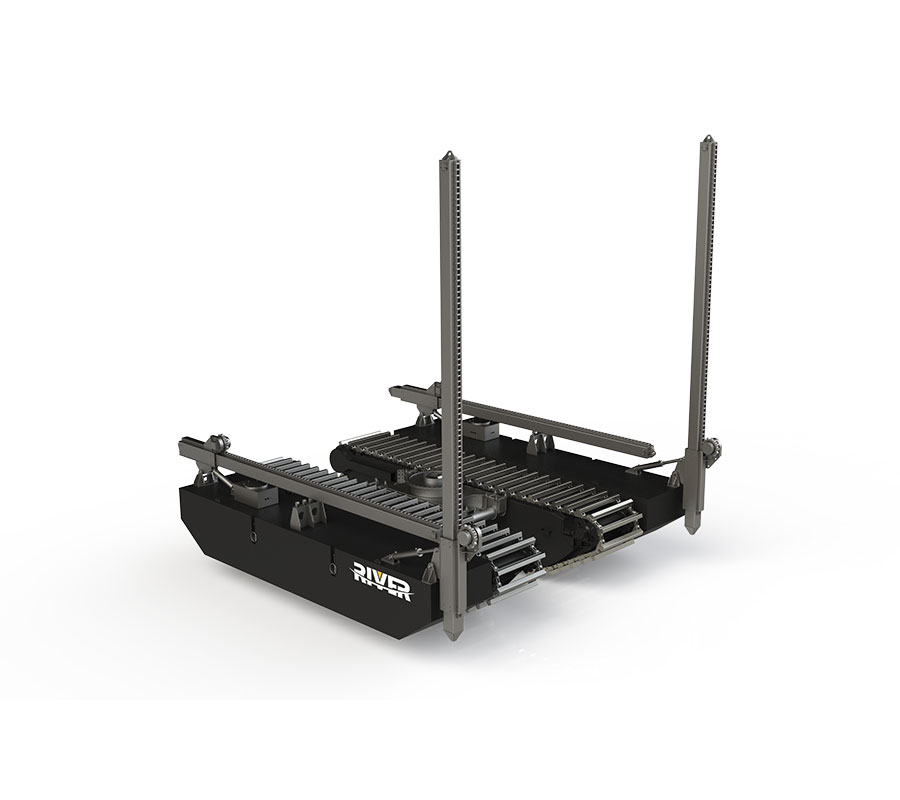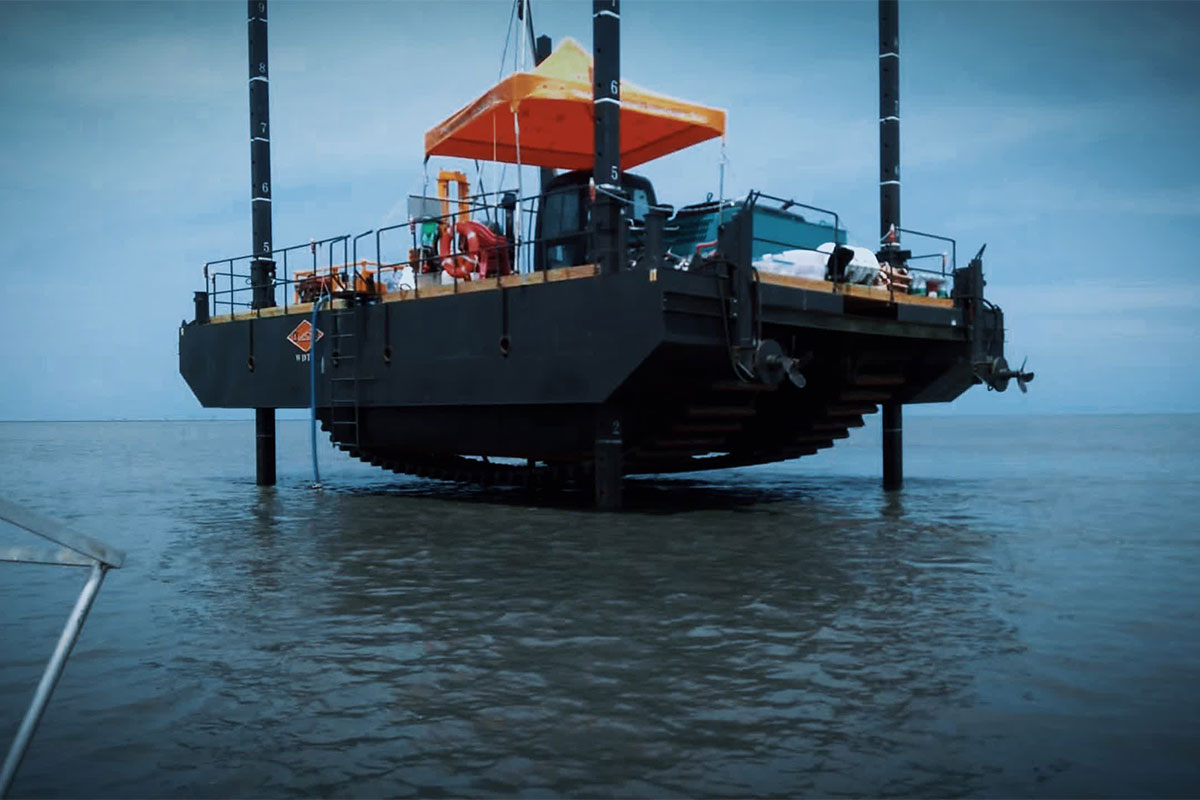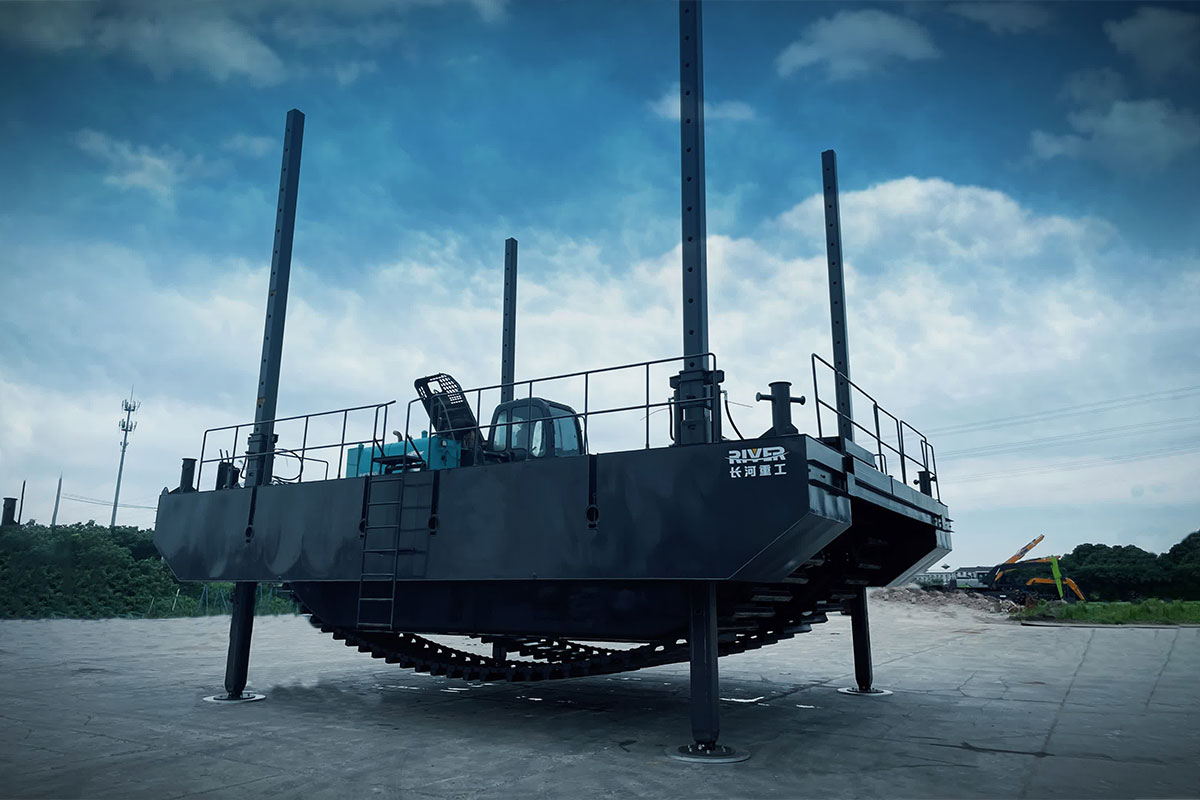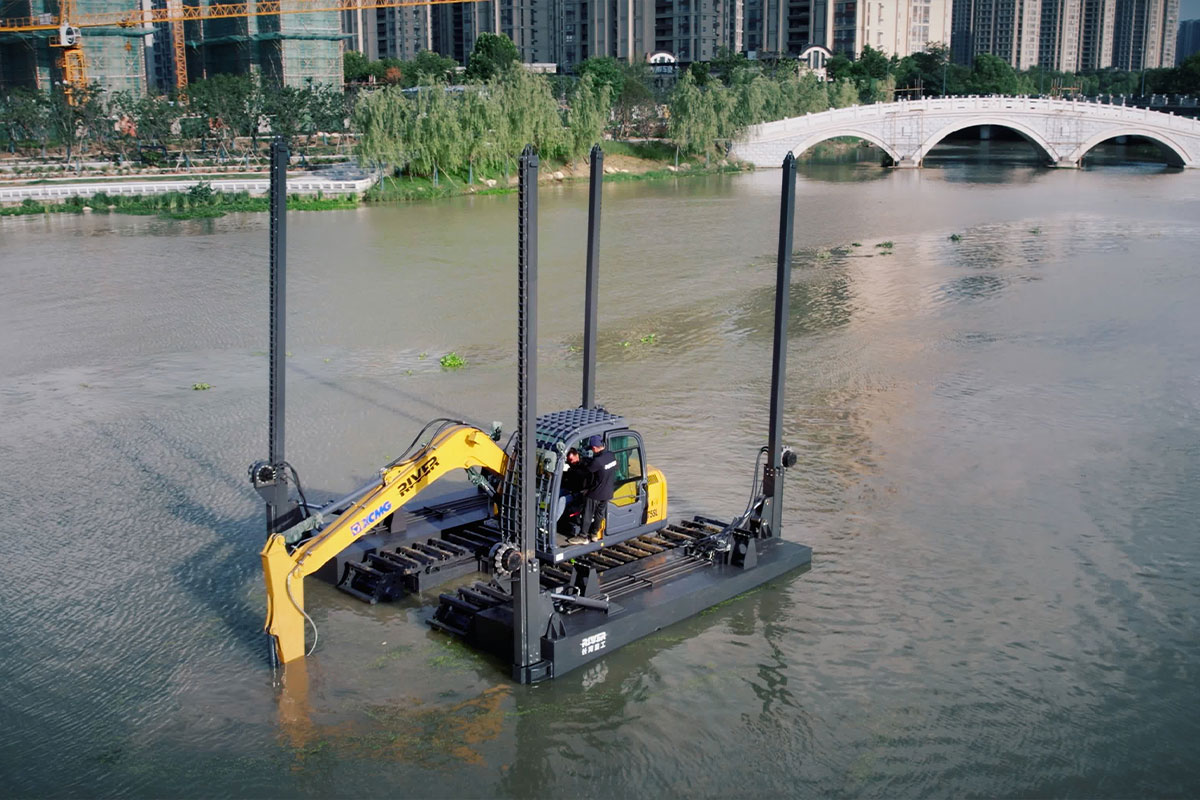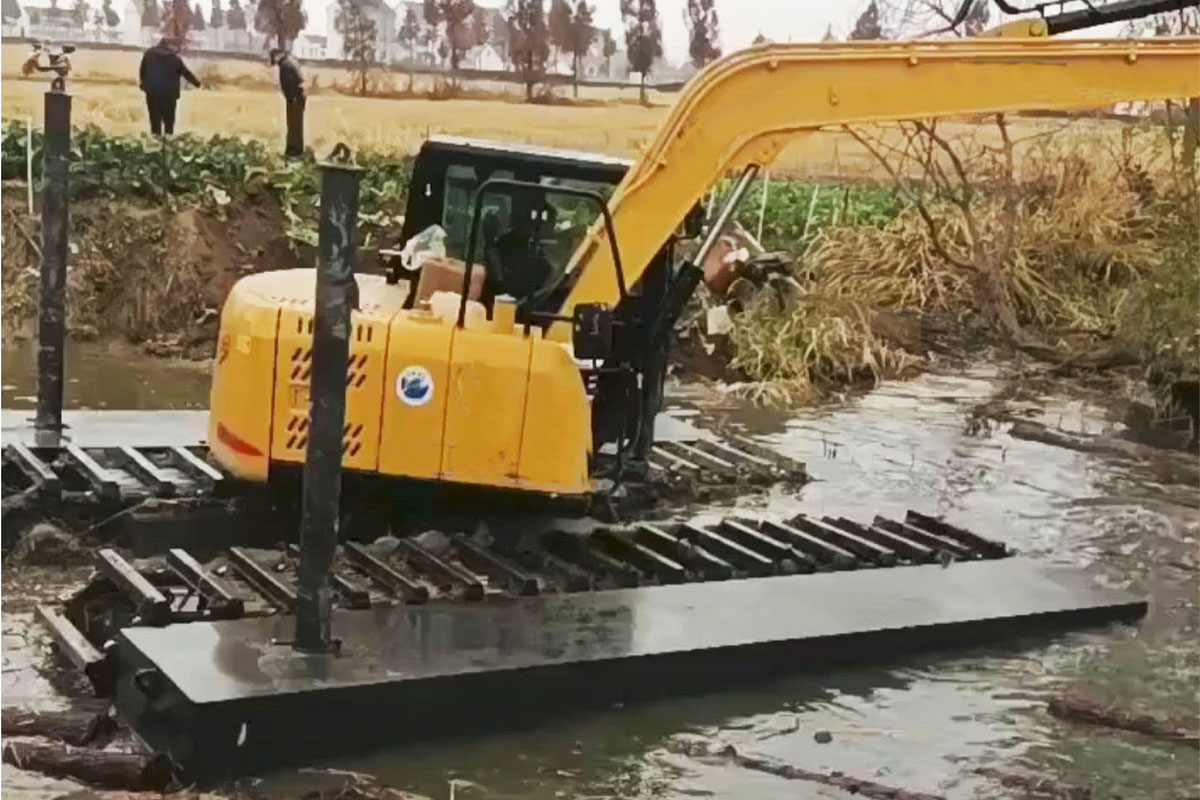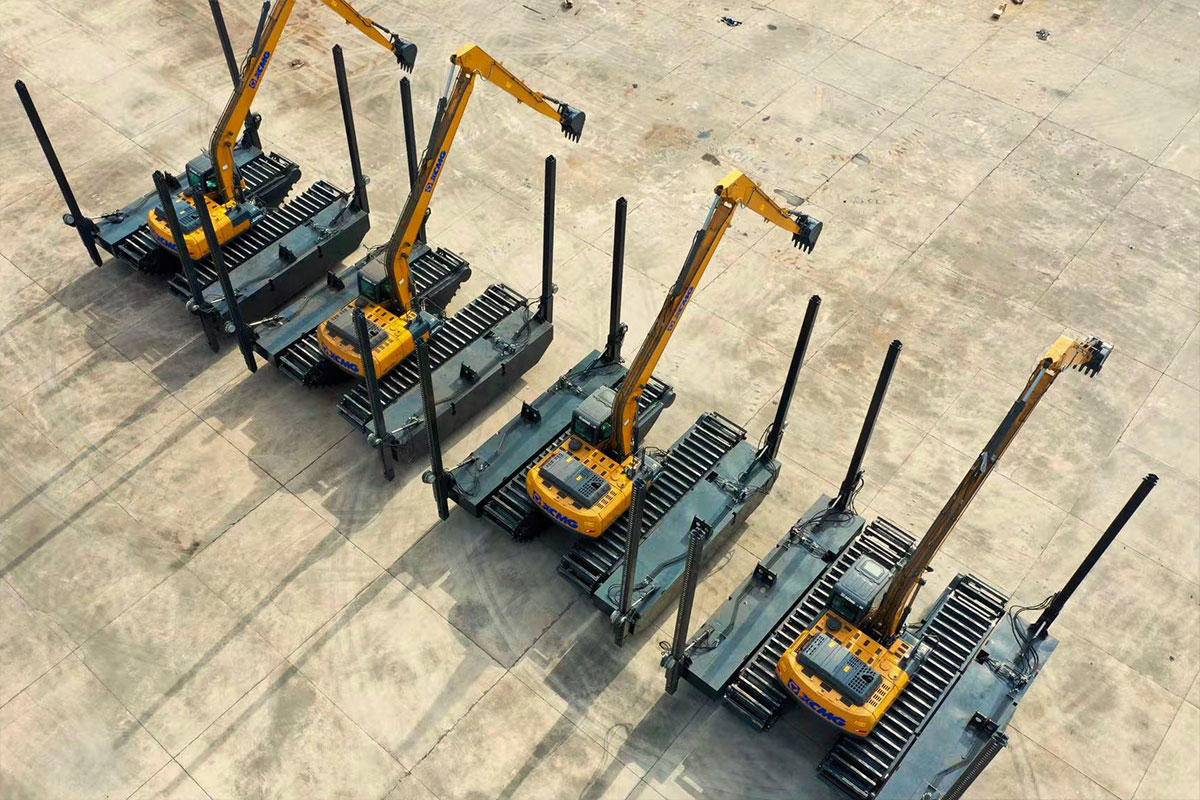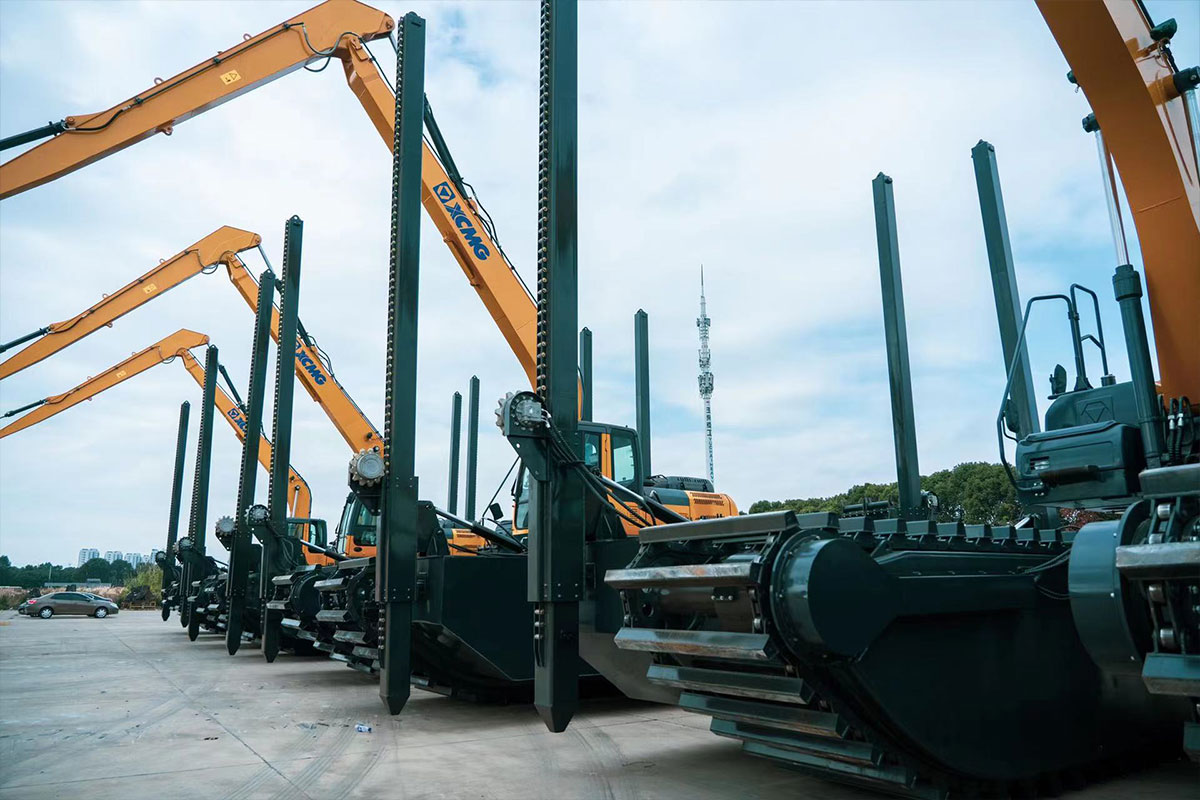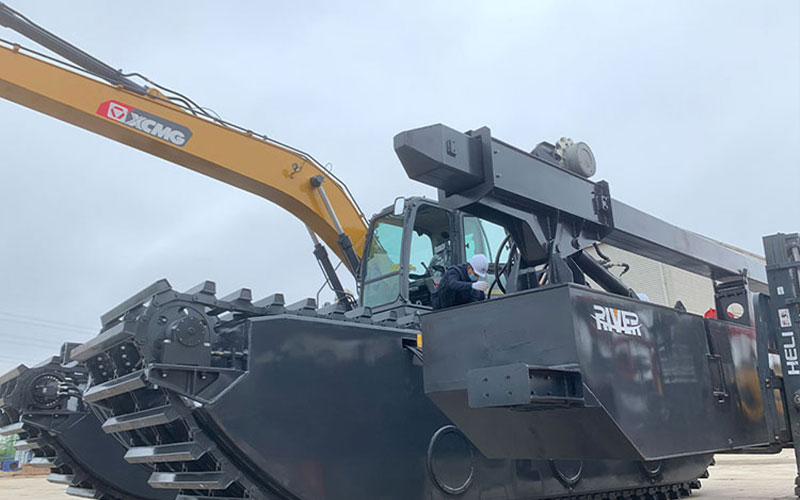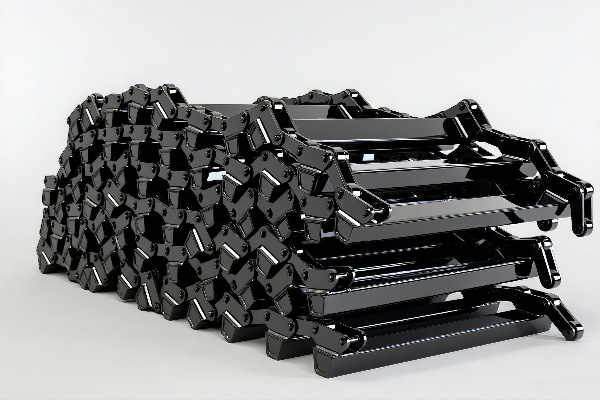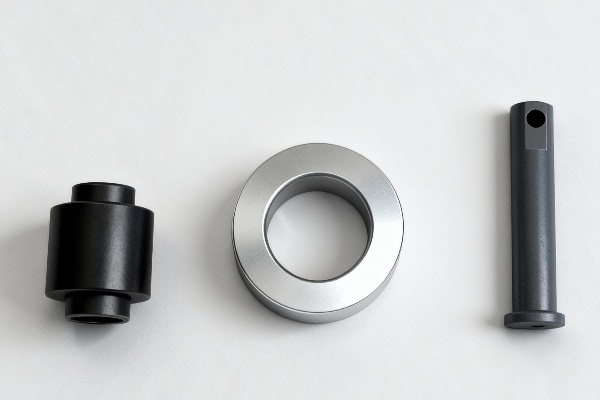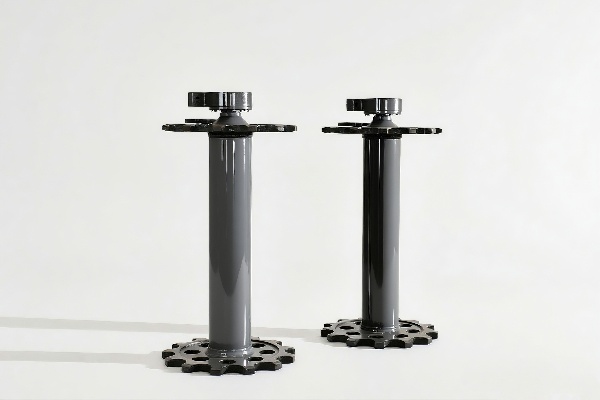High Quality Hydraulic Spud Barge For Sale
Features of Hydraulic Positioning Piles
- Precision Control: Fully independently developed by RIVER with automatic display and integrated hydraulic control for ease of operation.
- High-Quality Materials: Made from premium, corrosion-resistant materials for durability and reliability in harsh environments.
- Secure Anchoring: Provides superior stability with a secure grip on the aquatic bed, minimizing shifts or movements.
- Versatility: Adaptable to various aquatic environments, ensuring optimal performance in different locations and water depths.
- Seamless Compatibility: Designed for easy integration with different amphibious excavators, enhancing excavation efficiency with user-friendly operation.
Contact us today!
Hydraulic Positioning Piles: The Key to Amphibious Excavator Stability
Hydraulic positioning piles, which is a affiliate device of amphibious excavators, are specialized spuds that play a crucial role in enhancing the stability and operability of these amphibious machines in aquatic environments. Unlike traditional spuds, hydraulic positioning piles are designed to offer precise control over the positioning and anchoring of amphibious excavators.
These hydraulic spuds are deployed from the excavator’s pontoon undercarriage to secure the machine firmly onto the riverbed, lakebed, or any aquatic surface, preventing unwanted movement during operation. This is particularly useful in environments with currents or when performing delicate tasks that require high stability.
The hydraulic mechanism allows for smooth, adjustable deployment and retraction of the spud legs, enabling operators to quickly adapt to varying depths and conditions. This feature not only enhances the excavator’s efficiency and safety but also minimizes environmental impact by reducing the disturbance to the aquatic bed.
Hydraulic Positioning Piles VS Mechanical Positioning Piles
| Positioning Pile | Hydraulic | Mechanical |
| Precision | Superior precision with fine control and consistent force. | Less precise, manual adjustments required. |
| Speed | Faster due to powerful movements and less manual intervention. | Slower, more labor-intensive. |
| Cost | Higher initial investment | Lower initial cost, more accessible for smaller projects |
| Maintenance and Reliability | More complex, requires clean fluids and skilled maintenance. | Simpler, easier and cheaper to maintain, durable in harsh environments. |
| Suitability | Best for large-scale, time-sensitive projects needing precision and speed. | Ideal for small-scale projects, remote areas, or locations with power constraints. |
Specifications of Hydraulic Positioning Piles
| MODEL | SINGEL PONTOON SIZE | POSITIONING PILES SIZE | GROSS WEIGHT | BUOYANCY |
| RD80 | 5500*1450*900mm | 150*150*8*6000mm | 6.5T | 13.66T |
| RD150 | 6300*1500*1230mm | 200*200*10*5500mm | 8.8T | 21.8T |
| RD215 | 7520*1500*1260mm | 250*250*12*6000mm | 11T | 27T |
| RD300 | 8500*1500*1260mm | 250*250*12*6000mm | 13T | 32T |
| RD400 | 9000*1600*1300mm | 250*250*12*6000mm | 15T | 37T |
How Excavators with Amphibious Undercarriage Attachments Work?
Application and Usage of Hydraulic Positioning Piles
- Anchorage: Once deployed, spud barge penetrate the underwater soil or riverbed, anchoring the equipment firmly in place. This prevents the machinery from drifting due to currents, wind, or waves.
- Elevation Control: Hydraulic spuds allow for precise adjustments in the height of the equipment. By extending or retracting the spuds, operators can adjust the machinery’s elevation relative to the water level or terrain, facilitating stable and level operations.
- Reduced Impact from Environmental Conditions: By anchoring the equipment securely, hydraulic spuds mitigate the effects of changing environmental conditions, such as sudden water level rises or strong currents, ensuring continuous, stable operation.
- Enhanced Operational Efficiency: With the ability to stabilize the platform in a fixed position, operators can perform tasks more accurately and efficiently, whether it’s dredging, pile driving, or aquatic vegetation control.
- Increased Safety: The stabilization provided by hydraulic spuds significantly reduces the risk of capsizing or accidents, ensuring the safety of the operators and equipment.
Which is Preferable For Your Project: 2 or 4 Hydraulic Spuds?
Project Size and Scope
2 Hydraulic Spuds: Suitable for smaller projects or limited working areas, offering basic stability and adjustment for depth changes.
4 Hydraulic Spuds: Ideal for larger, complex projects needing higher stability and precision. They manage weight distribution better, especially in variable conditions.
Environmental Conditions
Variable Conditions: Four hydraulic spuds provide better stability and adaptability in areas with significant water movement, tidal changes, or uneven seabeds.
Stable Conditions: Two spuds suffice in environments with less variability in water depth or seabed composition.
Budget and Logistics
Cost: More spud legs mean higher equipment, operation, and maintenance costs. Ensure the budget aligns with the need for four spuds.
Complexity: More spuds require sophisticated control systems. Consier if the project benefits from this complexity.
Future Expansion or Adaptability
Adaptability: Projects needing to adapt to changing conditions or future expansions benefit from four spuds, offering greater flexibility in managing different loads and structural adjustments.
Related Amphibious Undercarriage And Its Attachment
Track Assembly of Amphibious Excavator
Track Assembly of Amphibious [...]
FIND YOUR RIGHT SOLUTION WITH RIVER HEAVY INDUSTRY
At RIVER, we prioritize delivering top-notch amphibious excavators and pontoon uncercarriage attachments. For inquiries or to discuss your specific needs, kindly fill out the form below. Your satisfaction is our global priority, and we ensure swift responses to clients worldwide. We look forward to connecting with you soon!

